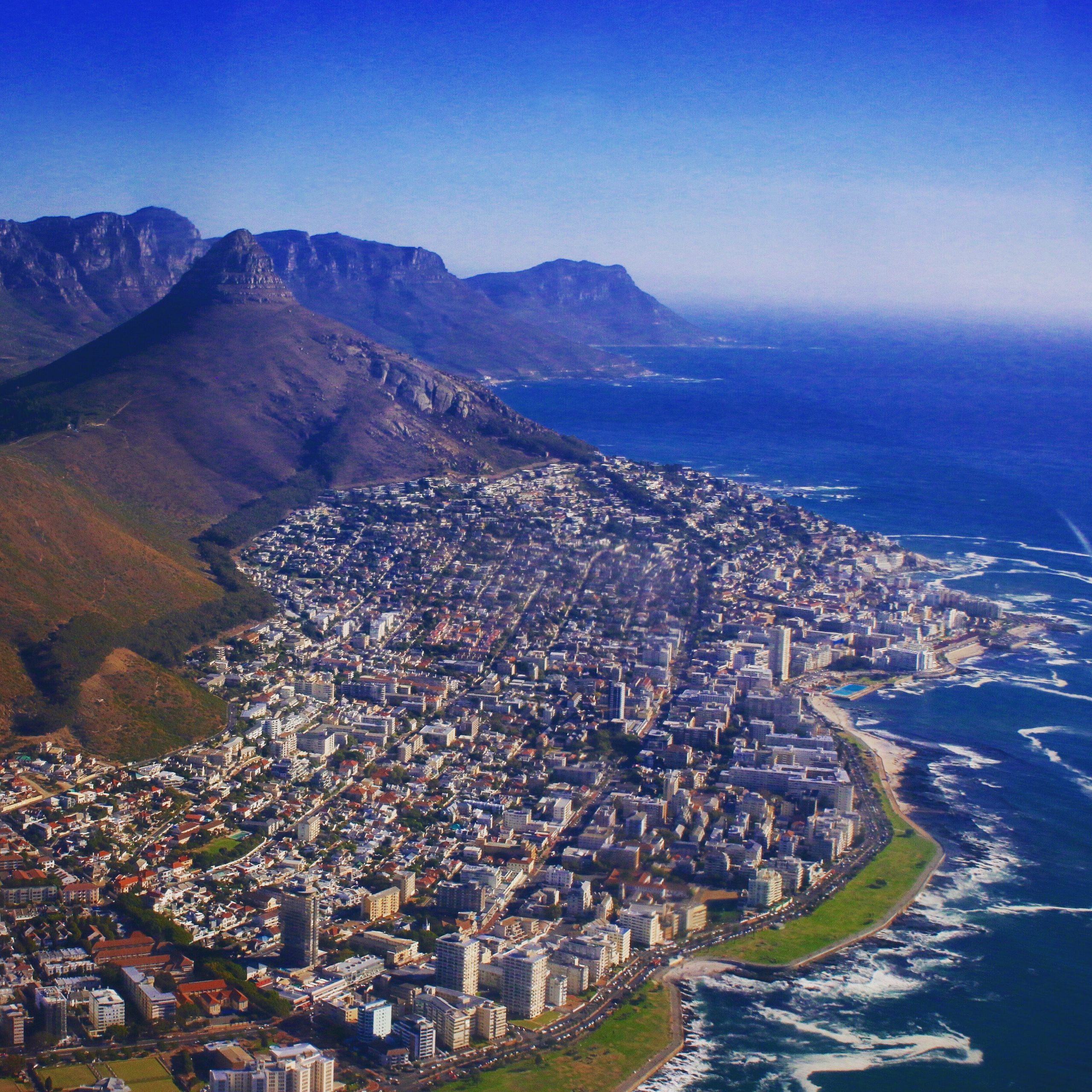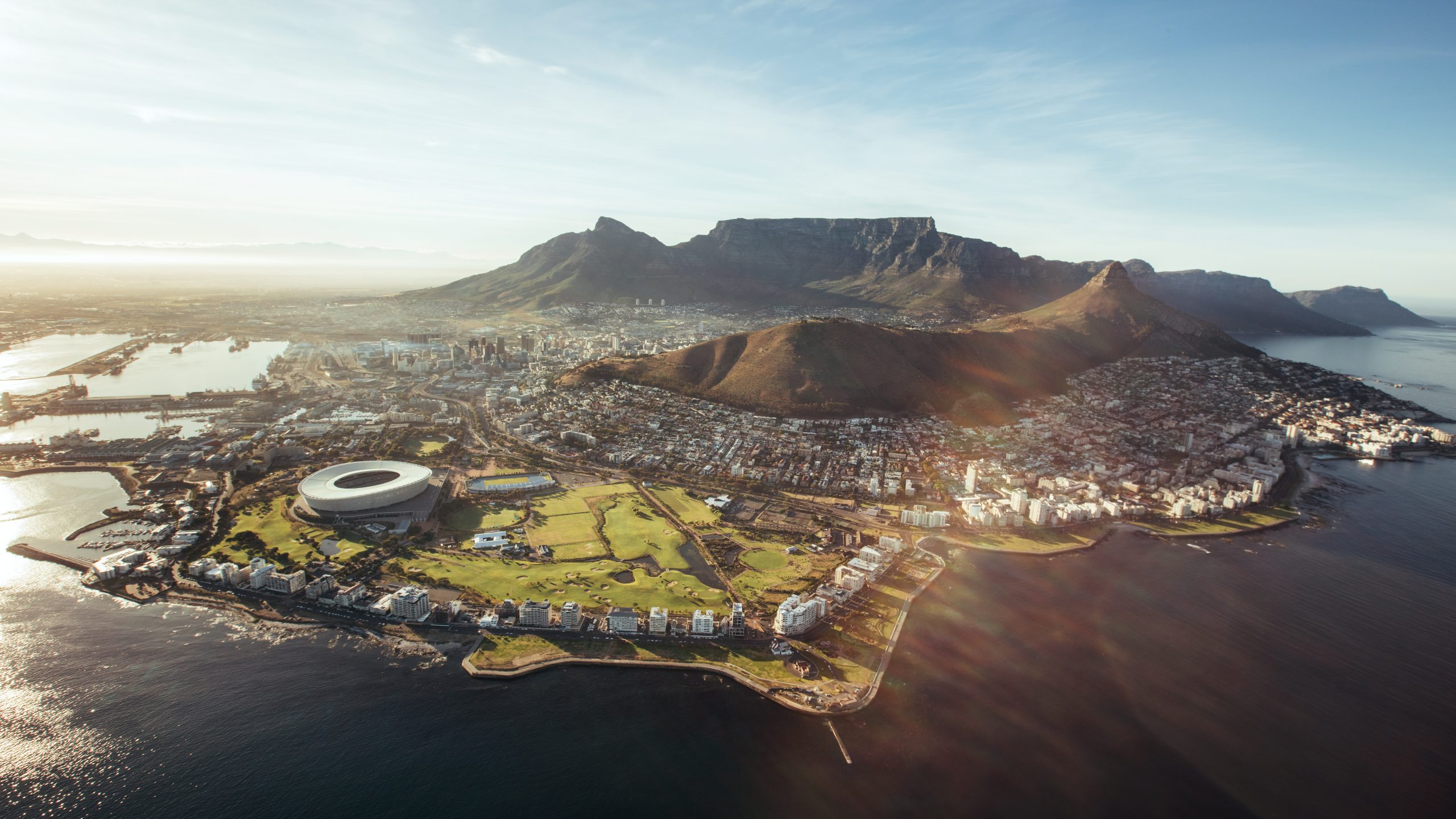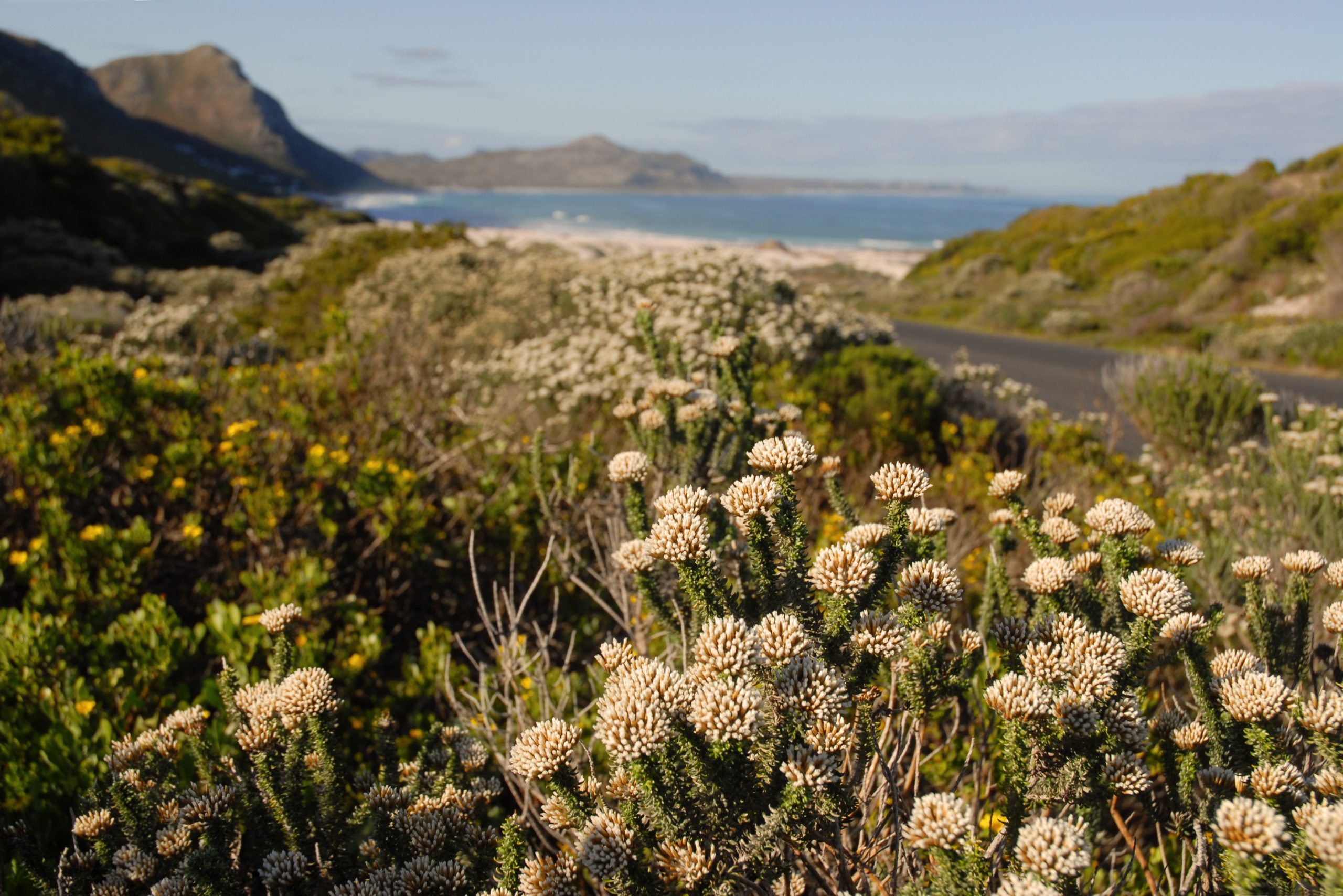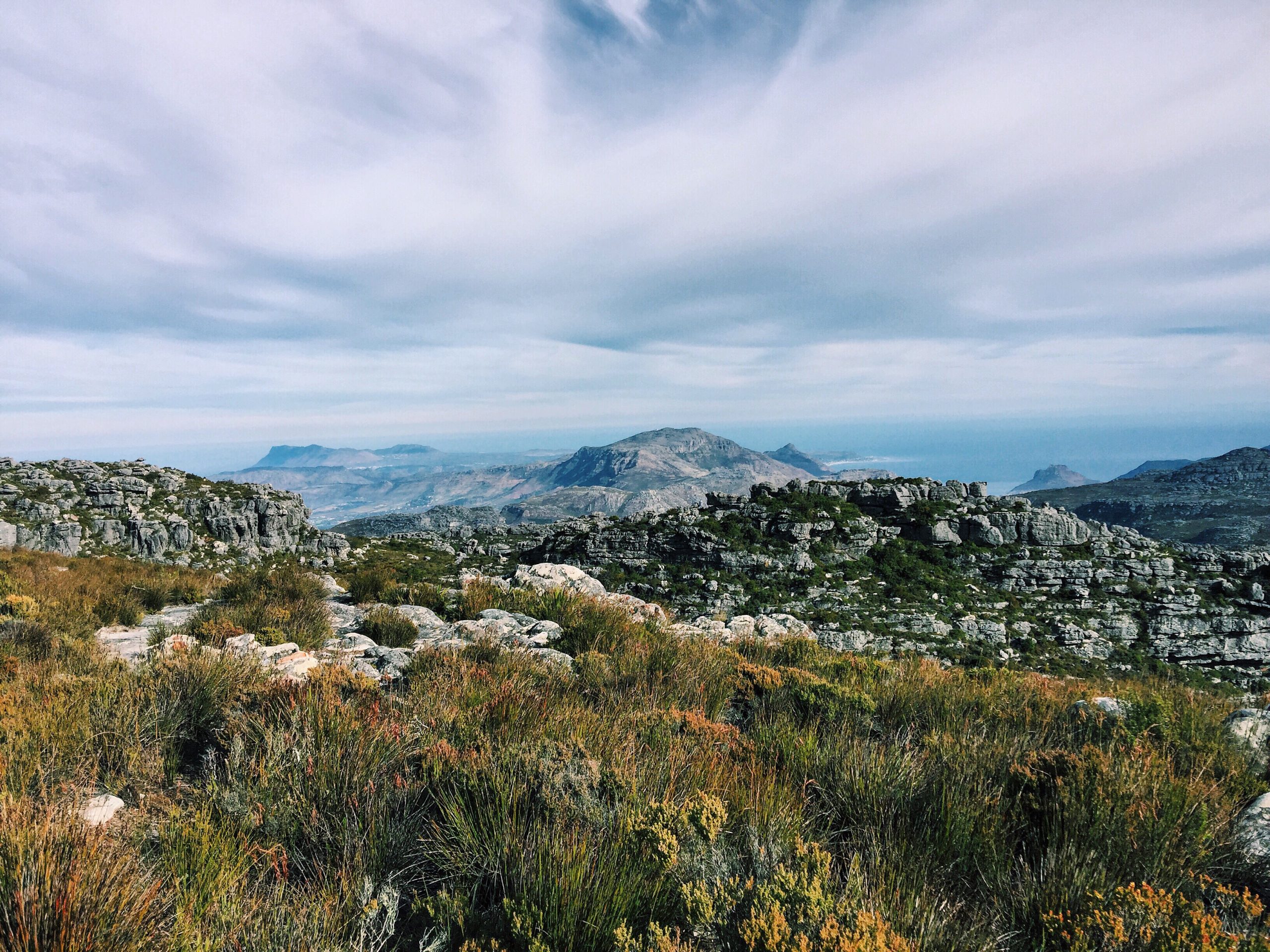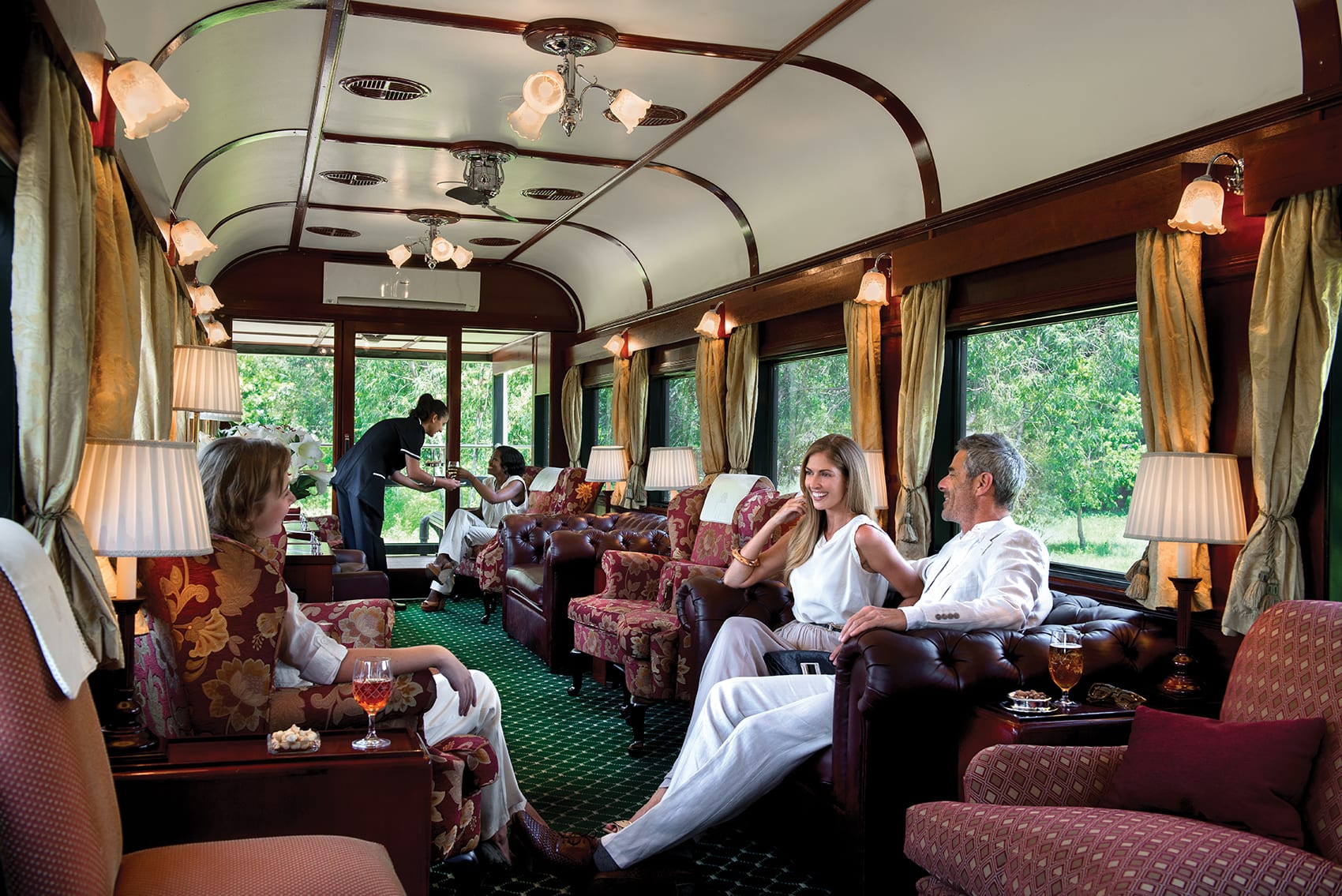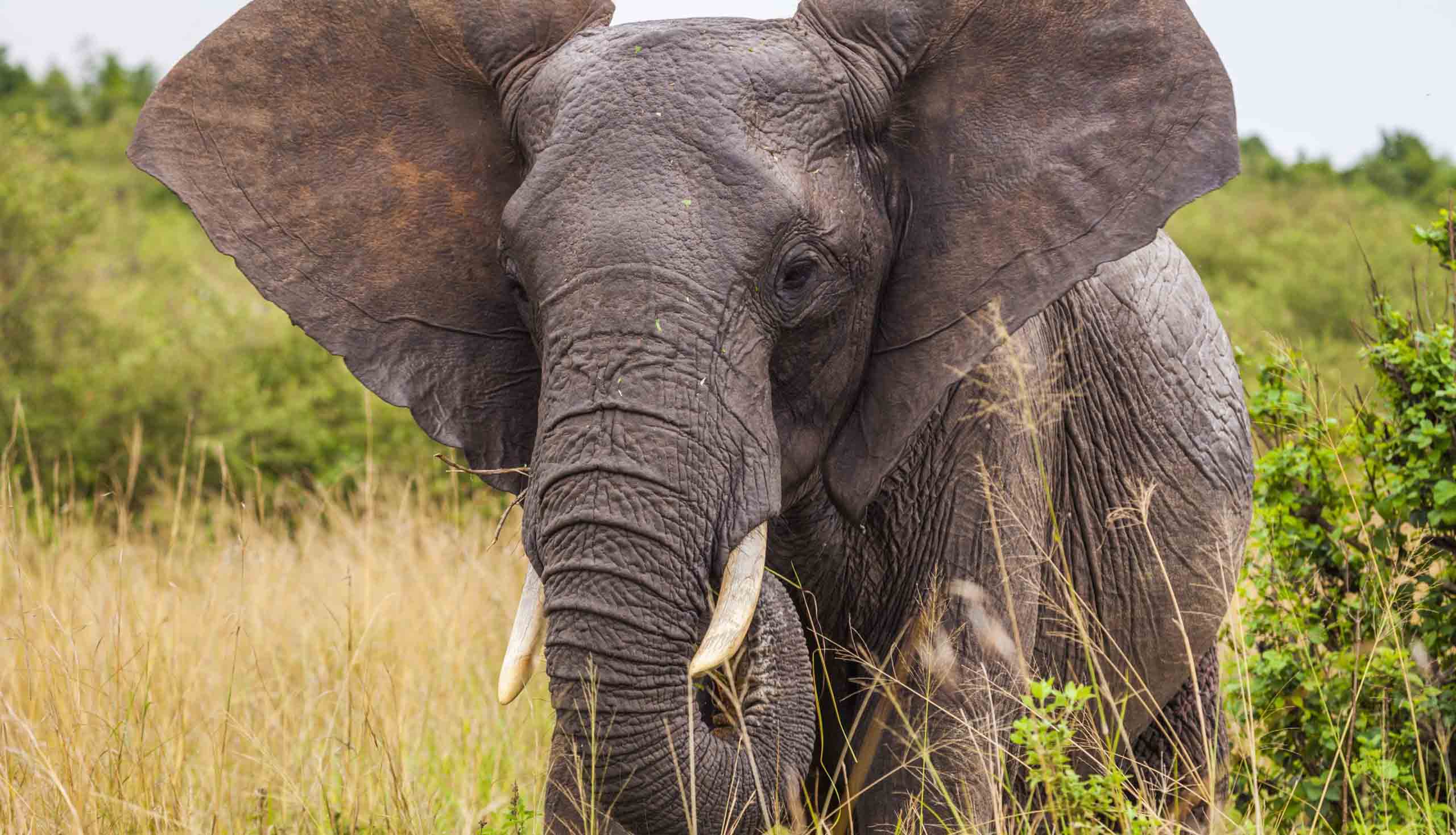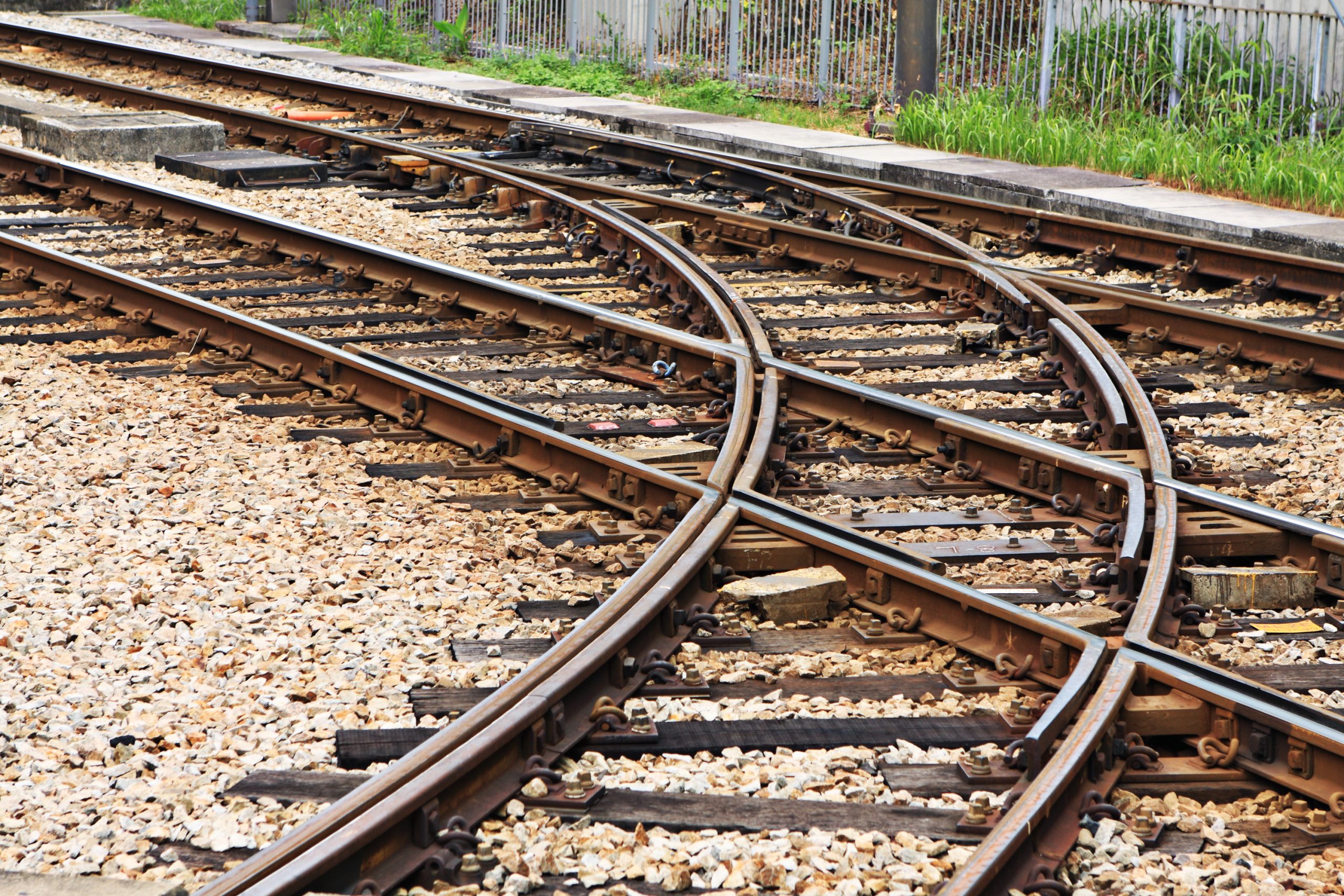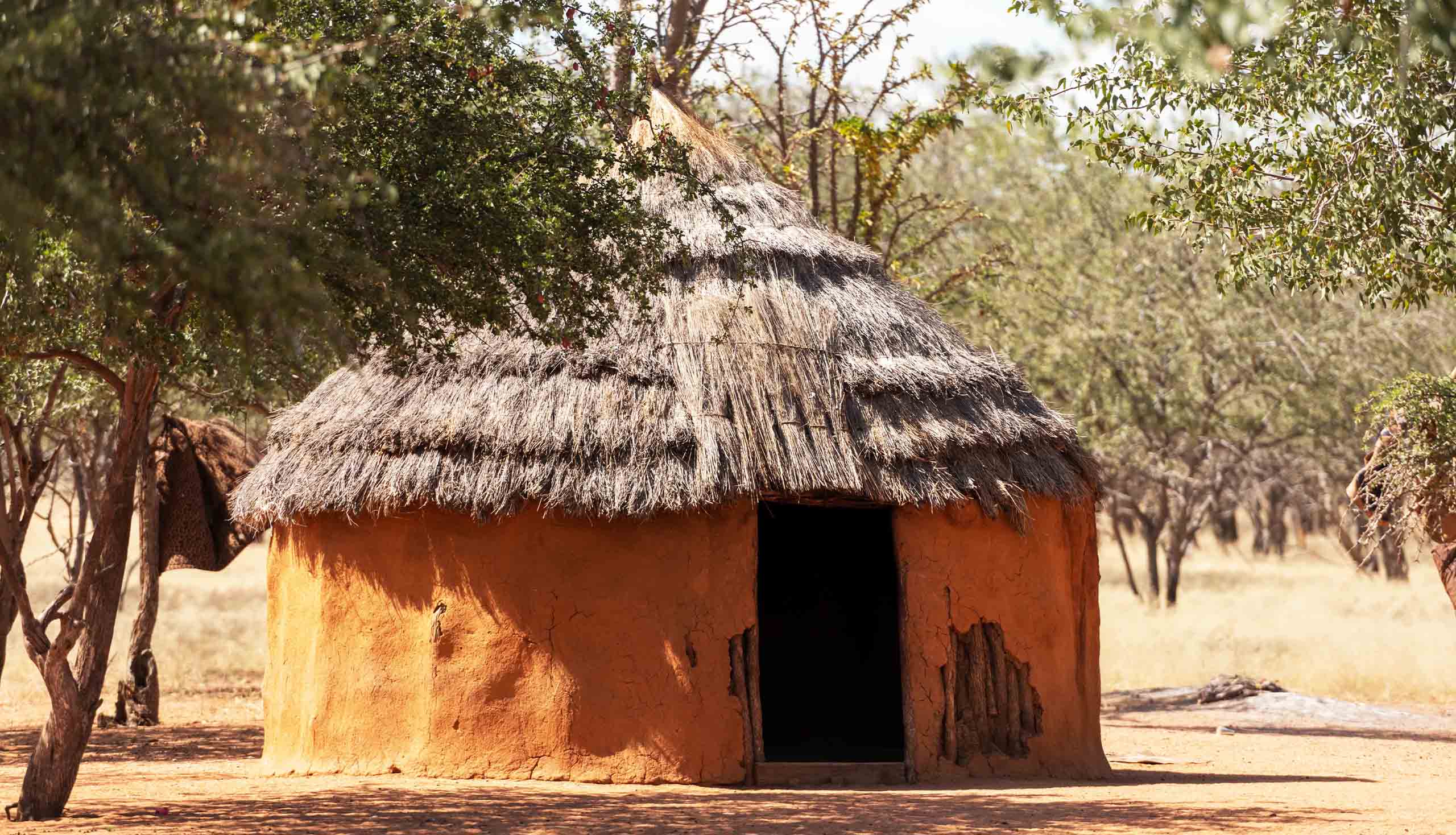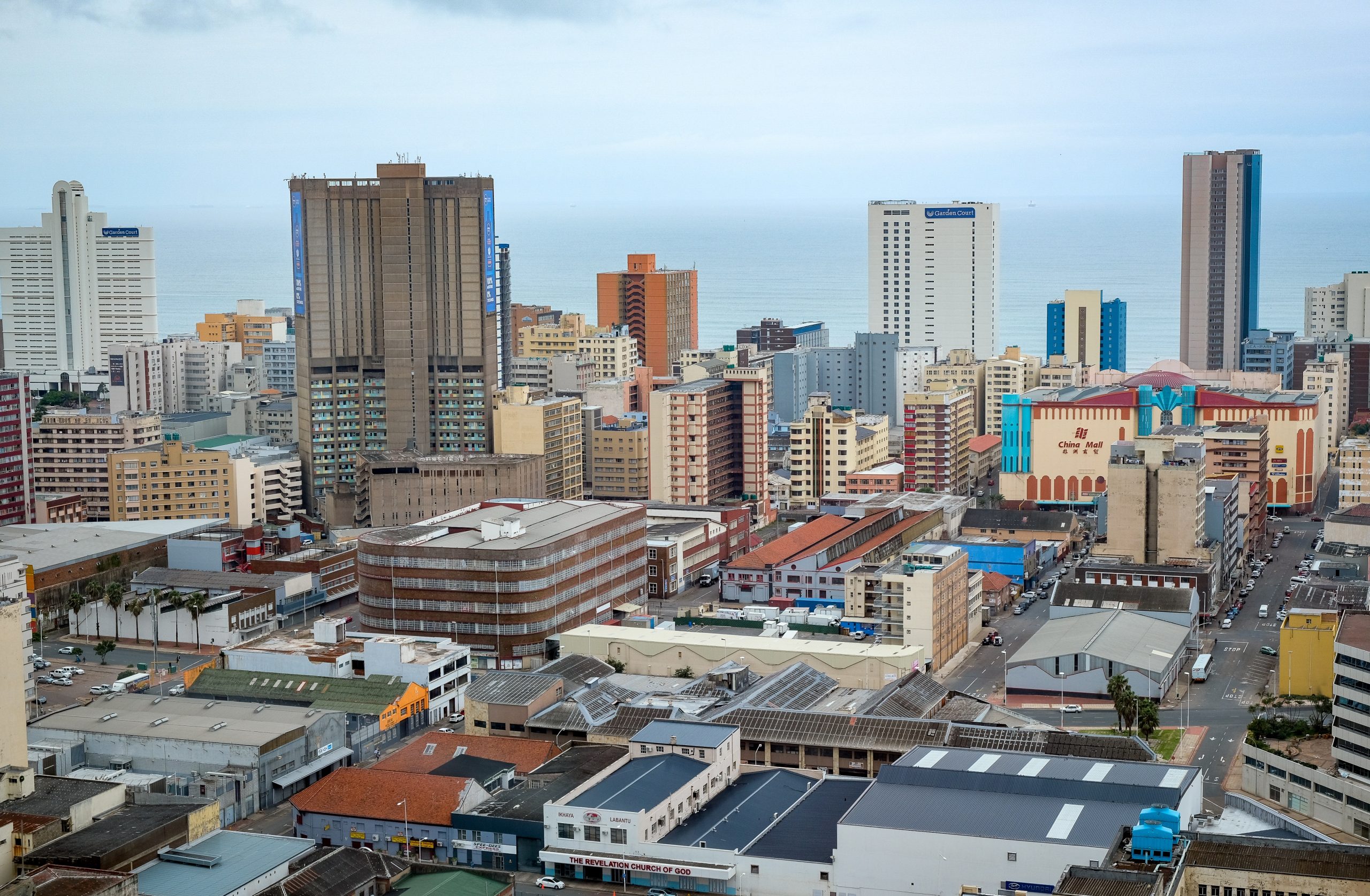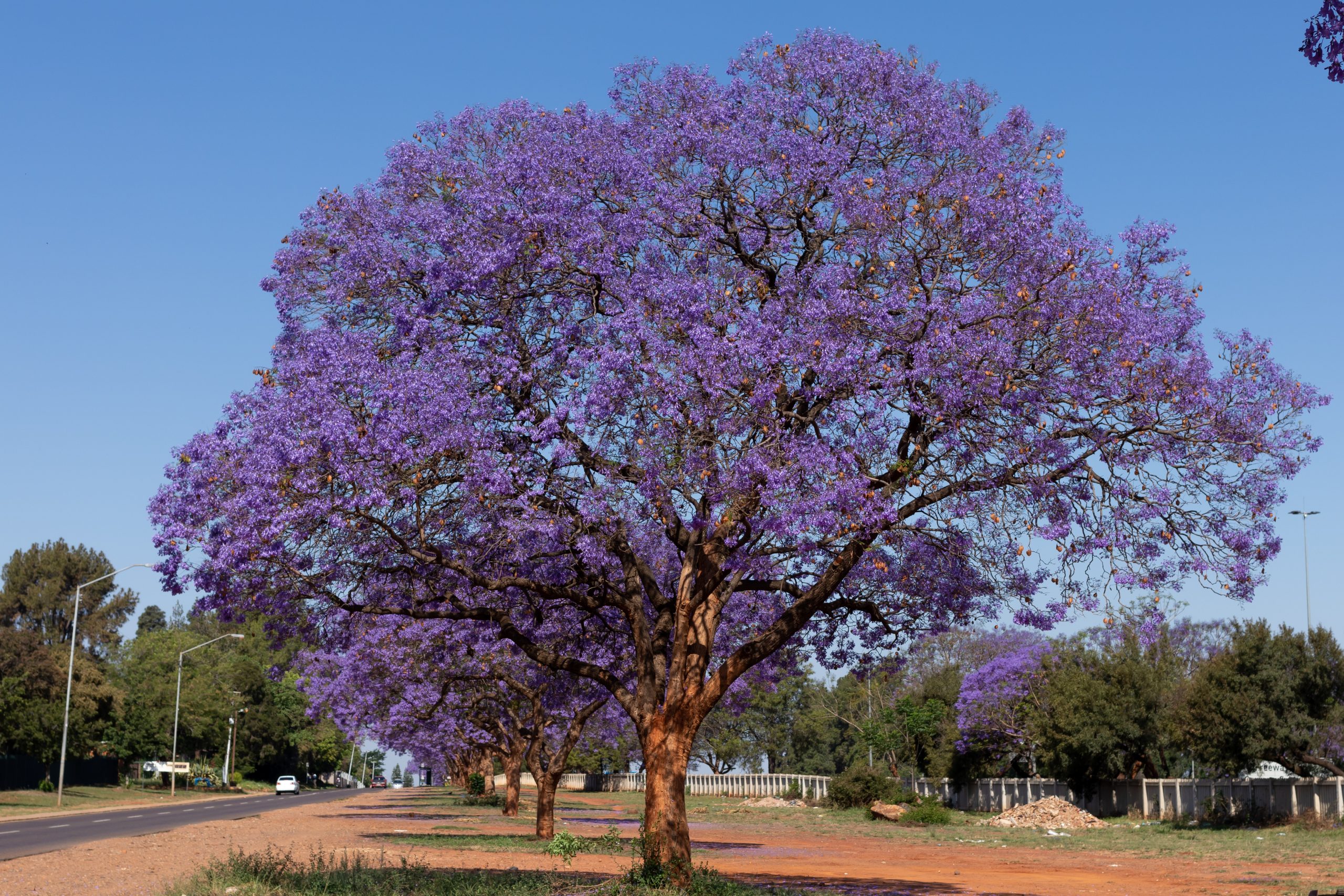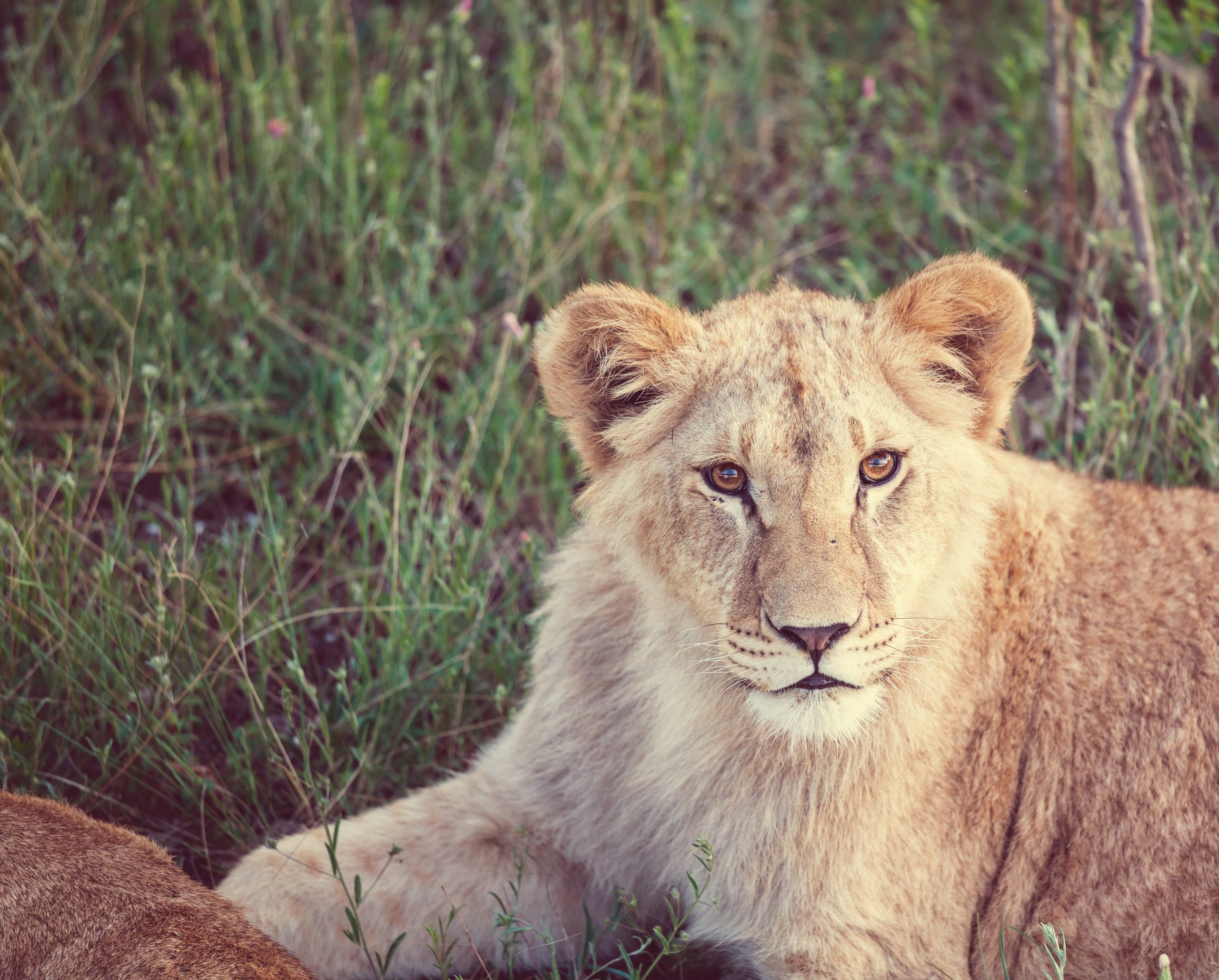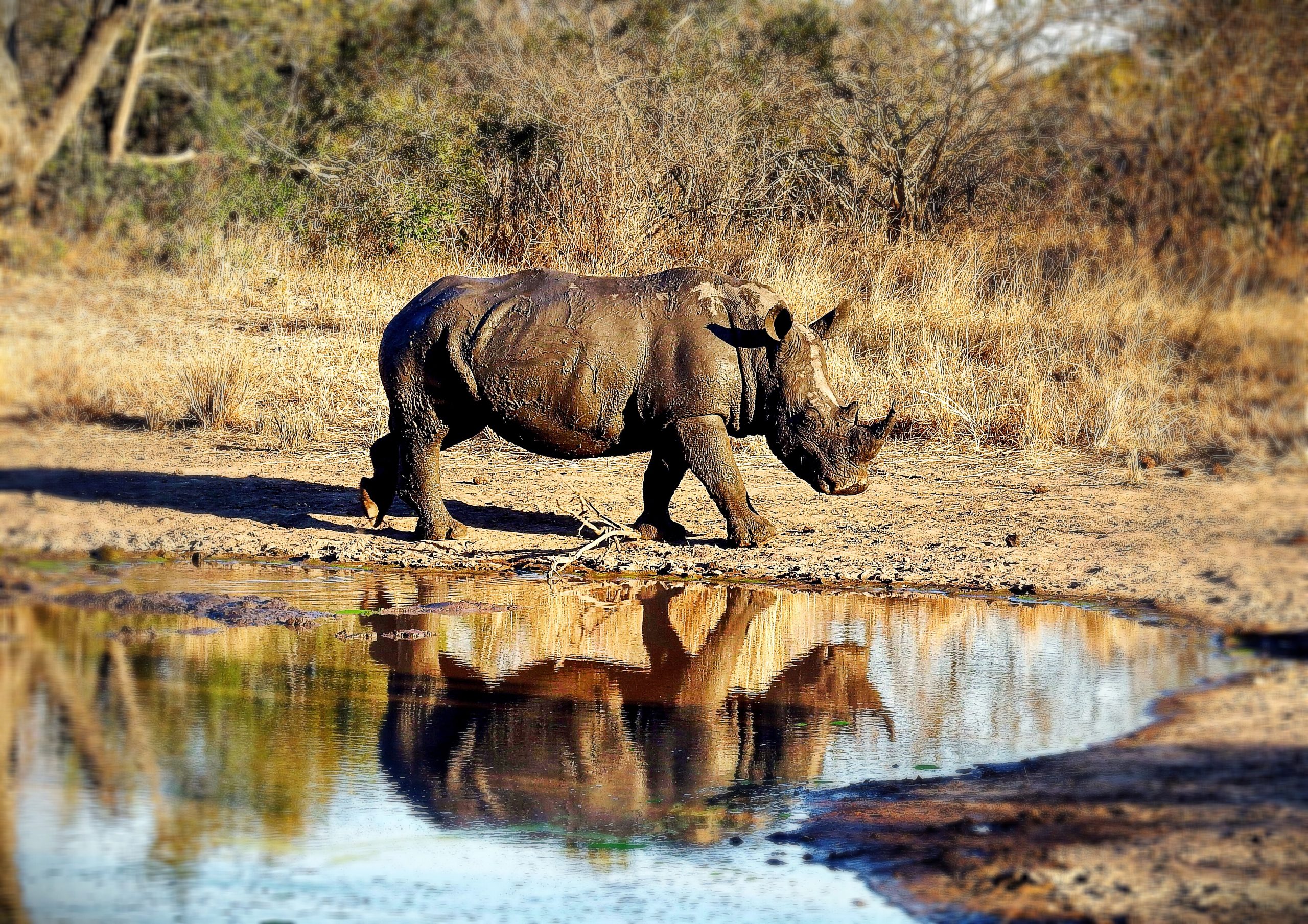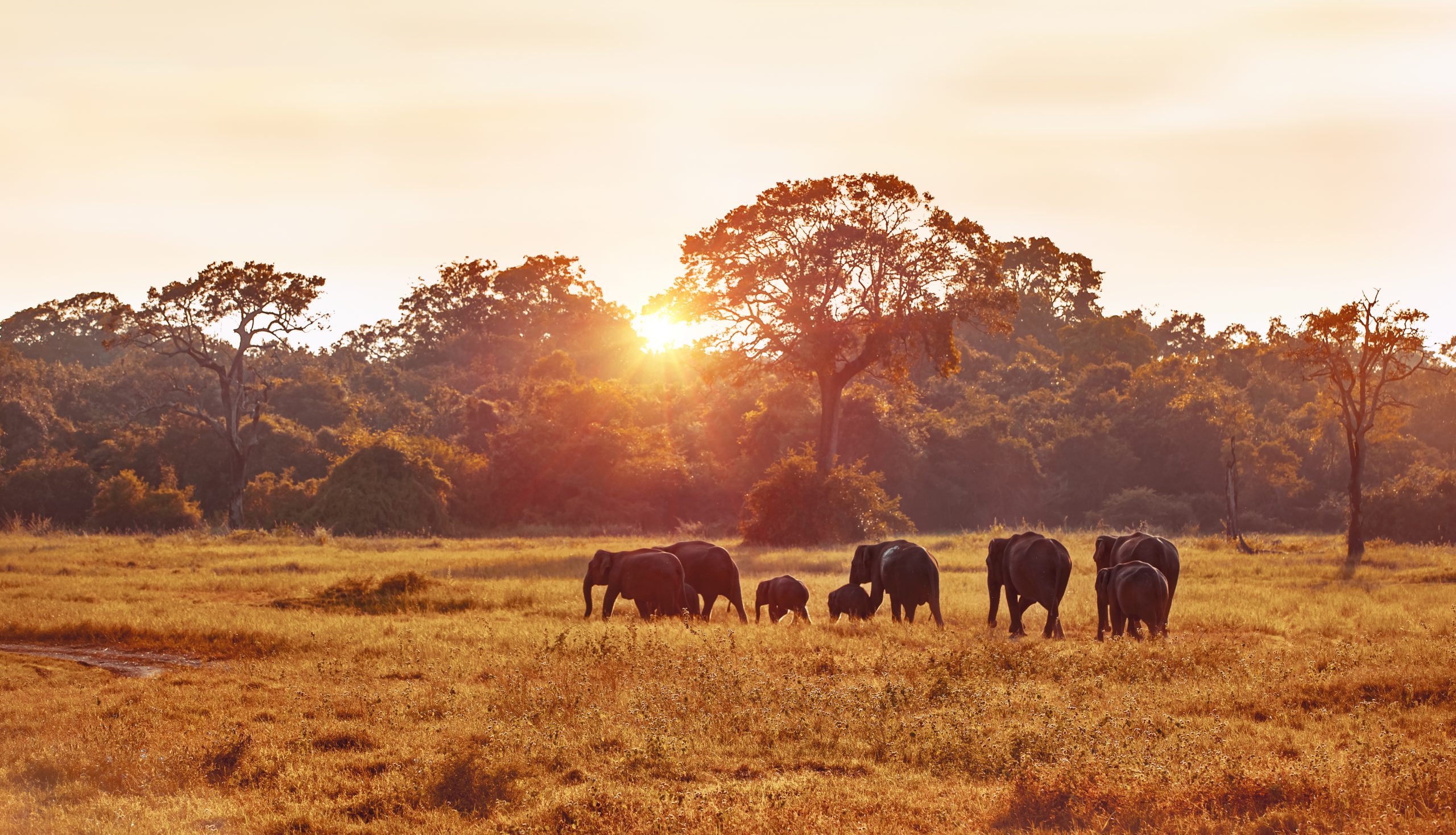SOUTH AFRICA Day 1 in South Africa — Arrival, Cape Town, and Robben Island It’s been just over 24 hours since landing …
SOUTH AFRICA
Day 9: A Day In Durban, South Africa
We woke up today to a much nicer morning than the rain that was pouring down on us last night. Since this was our first full day in Durban, we decided to spend it exploring the city center and getting out to the beach and get our feet wet in the Indian Ocean. Although the recommendation from the lodge manager was to take a taxi down to the central area, we decided that the hour long walk would be worthwhile. First off, I was dying to get some activity in after the last several days of being on the train and eating large meals several times per day. Furthermore, there is a lot more to see by walking than you can ever do by driving around.
So, off we went. From the Berea neighborhood, the city center and the ocean is all downhill. That made the route fairly straightforward. Even when we couldn’t see the tall buildings or the beach, all we had to do was walk in a downward direction. Like most cities I have traveled through in Africa and other parts of the world, Durban is not laid out very well. There are a lot of converging and diverging streets. Even with a map in the guide book, there was still some stopping and re-orienteering going on during our trek. Finally, however, we got to the famous Dr. Yusuf Dadoo Street that is supposedly famous for having the South Asian stores and culture. We turned down on it and walked for quite some ways. The bizarre thing was that even in the busiest part of this area, where most of the South Asian stores and restaurants should be, we didn’t really see that all that much that seemed like it was anything different than the rest of the city we had just walked through. In fact, there were actually more African’s walking the streets here than we had seen in other places like Cape Town. Very soon we arrived at the corner of Dr. Yusuf Dadoo and Queen Street. Here was the Juma Mosque, which is slated to be the largest mosque in the southern hemisphere. Seemingly, that should have appeared extremely large, but it turned out to be smaller than what my expectation was.
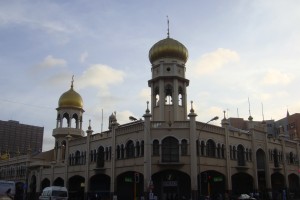


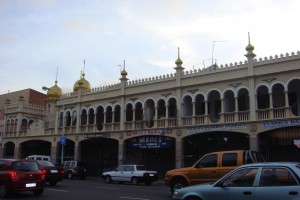


As an aside, there is an interesting change going on in Durban, as well as many other parts of South Africa. There is a re-Africanization of the street names in the cities and towns. During much of the 20th century, Dutch and European names were given to the streets and boulevards across the country. Since the end of Apartheid, many places have begun changing the European names to African ones. This is very apparent in Durban. In fact, many streets have two names written on the street signs: the original as well as the new African name. Usually, they have nothing to do with each other. The picture below shows an example of the original streets crossed out and replaced by the new one in white.
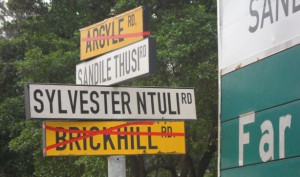


In any case, that is an interesting cultural oddity. I did hear of this before while in Cape Town and spoke with both whites and blacks about this issue. Overwhelmingly, both groups of people that I at least spoke to believe it is a total waste of taxpayer money to spend millions of Rands changing street signs all over the country instead of addressing other issues like rampant unemployment and crime. Granted, changing the signs does add to some job growth, but it’s not in proportion to the amount of money being consumed by this project.
We also ventured to the famous Victoria Street Market which is a hotbed for finding spices, incense and other products from the Indian subcontinent. The large two story building is laid out in a flea market style with almost two hundred merchants selling their wares to both locals and tourists. There were quite a few Indians that we encountered here, but they mostly the business owners of the stalls and shops rather than customers. By this time we were hungry for lunch and decided to ask someone for the nearest restaurant that would have a dish called the Bunny Chow that we had read about in the Rough Guide book.
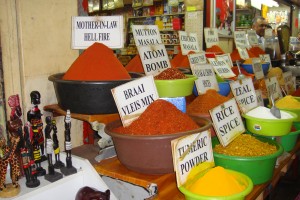


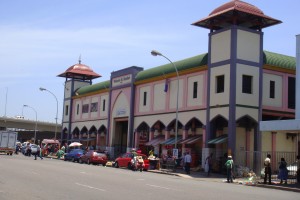


The closest analogy I can give to the bunny chow is our clam chowder in a sourdough bread-bowl back home in San Francisco. It was first introduced in 1930s and 40s in Durban during the Apartheid years as a way for the Indian community to serve food to the local black population that were excluded from going into restaurants. Basically, the center portion of a loaf of bread would be scooped out and filled with some kind of vegetable or meat curry dish. The cut out portion would then be put back on top so it looked like only a loaf of bread was being given. Fortunately, Apartheid is a relic of the past, but the bunny chow has lived on. Since I don’t really care to have a vegetable curry, we found a restaurant not too far from the Victoria Street Market called the Medina Cafe that sold the chow in addition to other Indian food. I ordered the chicken curry bunny chow. All in all, it wasn’t too bad, but I much prefer the clam chowder in a bread bowl back home. I guess I didn’t find the curry to be too spicy, and so it fell a bit short of my expectations for Indian food. However, being of a South Asian decent myself, I can easily make something like this at home and just pour it into a loaf of Wonder bread. The one other thing I will say about this is that eating a bunny chow is a very messy endeavor since it involves breaking off bits of bread to scoop up the curry with and so at some point the curry will spill out and over the loaf of bread.
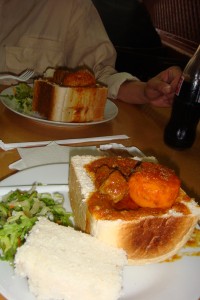


After lunch, we continued eastward and eventually got to the beach after about 30 minutes of walking. The water was certainly warmer than the Atlantic Ocean out by Cape Town. However, it wasn’t the awesome warm water I had experienced in Hawaii or Mexico. But, it’s still good to swim in and the tides on this particular day weren’t too bad. We spent about three hours or so hanging out at the beach and the uShaka Marine World and Village Park area on the southern point of the beach and just next to the entrance into Durban Harbor. We didn’t actually visit the aquarium here even though it is listed at the 5th largest one in the world, but we did explore the ship that serves as the entrance to the aquarium. The rest of the area is a developed waterfront area with lots of shops and restaurants for tourists.
From here, we walked back to the city center, had some really good pizza at a restaurant called Debonairs Pizza, which is the leading pizza chain in South Africa. It was pretty close to sunset by this time, and so after trying and failing to find a bus to take us back to the Berea area where the Hippo Hide Backpackers Lodge was, we ended up getting a taxi and paying the driver R50 for the ride back.
All in all, we didn’t really care too much for Durban. The city center is quite dirty and the Indian culture, while there, isn’t really very prominent. Perhaps we’re are spoiled by living in the San Francisco Bay Area where we see people from the Indian subcontinent everywhere we go so we were definitely underwhelmed by that aspect of the city.
If you will be visiting Durban, don’t plan more than 2 days max to get in and out of the city. It may also be a good idea to rent a car so that you can get around without relying on public transportation since it is more difficult to get around in Durban than it is in Cape Town.
Share this post:
RELATED POSTS
SOUTH AFRICA Day 2 – Walking Around Cape Town The morning greeted us with a completely different weather pattern than the previous …
SOUTH AFRICA Day 3 – To the Ends of Africa Well again, no luck. The morning dawned with another overcast day even …
SOUTH AFRICA Day 4 – AfricaCom and Table Mountain At last! Today turned out to be bright and beautiful. The sun was …
SOUTH AFRICA Day 5 – Last Day in Cape Town and AfricaCom Today, November 11, was the second and last day of …
SOUTH AFRICA Day 6: The Rovos Rail – Pretoria to Durban The Golden Age of train travel is now more or less …
SOUTH AFRICA Day 7: Rovos Rail and Safari Drives Sure enough, we were woken up at 5 AM by our hostess, Sarah, …
SOUTH AFRICA Day 8: Rovos Rail Journey Ends at Durban, South Africa There was no early morning wakeup call today. In fact, …
SOUTH AFRICA Day 10: 24 Hours with the Zulu Not wanting to spend another day within Durban, we opted to go and …
SOUTH AFRICA Day 11: Farewell to the Zulu Village, Then Durban to Pretoria Even in the best of travels, there is always …
SOUTH AFRICA Day 12: Out and About in Pretoria, South Africa I remember learning the song We Are Marching To Pretoria back in 3rd …
SOUTH AFRICA Day 13: Begin Walking Safari in Kruger National Park This morning would start the high point of our trip – …
SOUTH AFRICA Day 14: Making Hemingway Proud — Tracking Rhinos on Foot Other than the fact that there is very little to …
SOUTH AFRICA Day 15: Finishing off the Big Five Game Animals in Kruger National Park Hands down, today was a great safari …

